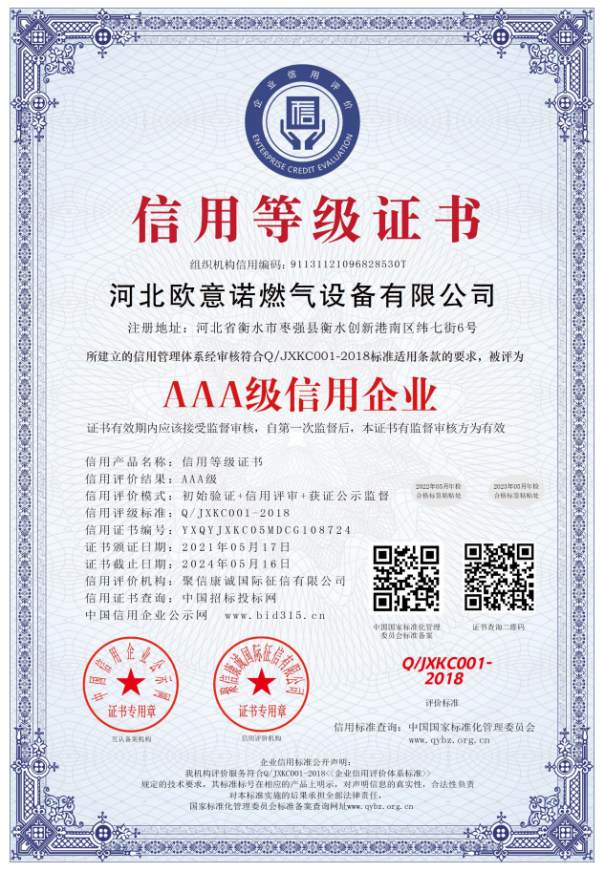
Nov . 06, 2024 05:15
Back to list
natural gas pressure reducing valve
Understanding Natural Gas Pressure Reducing Valves
Natural gas is one of the most widely used energy sources worldwide, powering everything from home heating systems to industrial processes. However, the pressure of natural gas can vary significantly throughout the distribution system. To ensure safe and efficient utilization of this energy source, pressure reducing valves (PRVs) play a crucial role in regulating the gas pressure entering residential, commercial, and industrial applications.
What is a Pressure Reducing Valve?
A pressure reducing valve is a mechanical device designed to decrease the pressure of natural gas from a higher input pressure to a lower, more manageable output pressure. This regulation is essential because natural gas arrives at various locations from the utility company at high pressures (ranging from 60 to 100 psi), which can be hazardous if not properly controlled. The PRV safeguards users by maintaining a consistent and safe pressure level, typically ranging from 5 to 20 psi for residential systems.
How Does It Work?
The operation of a pressure reducing valve involves various components, including a valve body, inlet and outlet ports, a diaphragm, and an adjustment mechanism. When high-pressure gas enters the valve, it pushes against the diaphragm, which is calibrated to withstand only a specific pressure threshold. As the gas pressure on the inlet side increases, the diaphragm flexes, opening the valve partially. This action allows gas to escape through the outlet port at a reduced pressure.
An adjustment knob or screw enables users to set the desired output pressure, ensuring flexibility to match the requirements of different appliances. It is important to note that PRVs are self-regulating; they continuously adjust to variations in inlet pressure, providing a stable output.
natural gas pressure reducing valve

Importance of Pressure Reducing Valves
The importance of pressure reducing valves cannot be overstated. First and foremost, they enhance safety by preventing excessive pressure from reaching appliances, which could lead to leaks, explosions, or other dangerous situations. Most modern appliances, such as furnaces, water heaters, and stoves, are designed to function optimally at lower pressures. PRVs ensure that these appliances operate efficiently, prolonging their lifespan and improving energy efficiency.
Moreover, PRVs minimize the risk of pipeline damage and reduce wear and tear on gas-fired equipment. By maintaining a consistent pressure, they help to ensure that natural gas is delivered in a form suitable for a wide range of applications, from heating to cooking.
Maintenance and Considerations
Like any mechanical device, pressure reducing valves require regular maintenance to ensure reliability. Users should periodically inspect the valves for leaks, rust, or any signs of wear. Moreover, it is crucial to ensure that the outlet pressure remains consistent and within the manufacturer's specifications. If fluctuations are noted, it may be necessary to adjust the valve settings or consult a professional.
In conclusion, natural gas pressure reducing valves are essential components in the safe and effective use of natural gas. They serve as the gatekeepers of gas pressure, ensuring that end-users receive gas at a safe and manageable level. With proper maintenance and understanding, these valves not only enhance safety but also contribute significantly to the energy efficiency of homes and businesses. Thus, they play a vital role in the energy landscape of today’s world.
Latest news
-
Safety Valve Spring-Loaded Design Overpressure ProtectionNewsJul.25,2025
-
Precision Voltage Regulator AC5 Accuracy Grade PerformanceNewsJul.25,2025
-
Natural Gas Pressure Regulating Skid Industrial Pipeline ApplicationsNewsJul.25,2025
-
Natural Gas Filter Stainless Steel Mesh Element DesignNewsJul.25,2025
-
Gas Pressure Regulator Valve Direct-Acting Spring-Loaded DesignNewsJul.25,2025
-
Decompression Equipment Multi-Stage Heat Exchange System DesignNewsJul.25,2025

